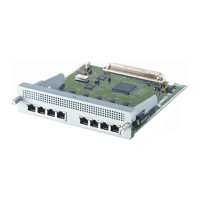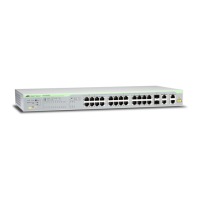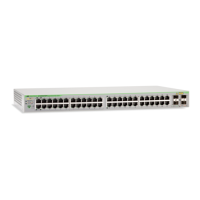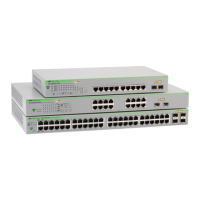Spanning Tree Protocol (STP and RSTP) Introduction
4-63
Software Reference for SwitchBlade x3100 Series Switches (Layer Two Switching)
4.5.3.1 Protocol Concepts
4.5.3.2 Protocol Communication
To ensure that the switches in the extended LAN agree about root bridge, root port, and designated bridge
elections, they must communicate information about bridge IDs and root path costs to other switches. This
communication is accomplished via the exchange of messages known as Configuration Bridge Protocol
Data Units (BPDUs), also known as hello messages.
There is also the need to communicate when changes occur in the network topology (e.g. link failure or a new
bridge). This type of communication is accomplished via the exchange of Topology Change Notification (TCN)
BPDUs.
4.5.3.3 Spanning Tree Port States
An SBx3112 switch port that is participating in spanning tree operations can be in one of six states. A summary
of the states is provided in Table 4-11.
TABLE 4-11 Spanning Tree Port States
State Meaning Transition
Blocking The port is disabled for receiving and trans-
mitting normal traffic frames. It may receive
BPDU frames, but does not transmit them. It
does not add information about any MAC
address from either Received BPDUs to its
forwarding database
This is the initial state for each port.
The switch also places the ports into
his state to eliminate network loops,
or if its perception if the network
topology changes (new root port or
root bridge).
Listening The port does not receive or transmit traffic
data frames.It may receive and transmit
BPDUs. It does not add information about
source MAC addresses from received BPDUs
to the forwarding database.
The switch places ports into this sate
if it is a candidate for participating in
the spanning tree topology.
Learning The port does not receive or transmit traffic
data frames. It may receive and transmit
BPDUs. It adds source MAC address informa-
tion from the BPDU to the forwarding data-
base.
The switch places ports into this
state upon expiration of a forwarding
delay timer while in the listening
state, unless something has caused
the port to be placed in the blocking
state.
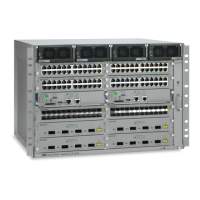
